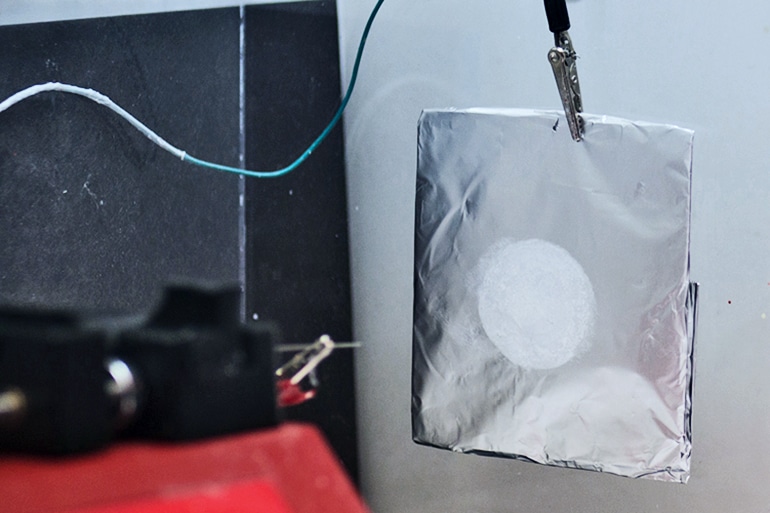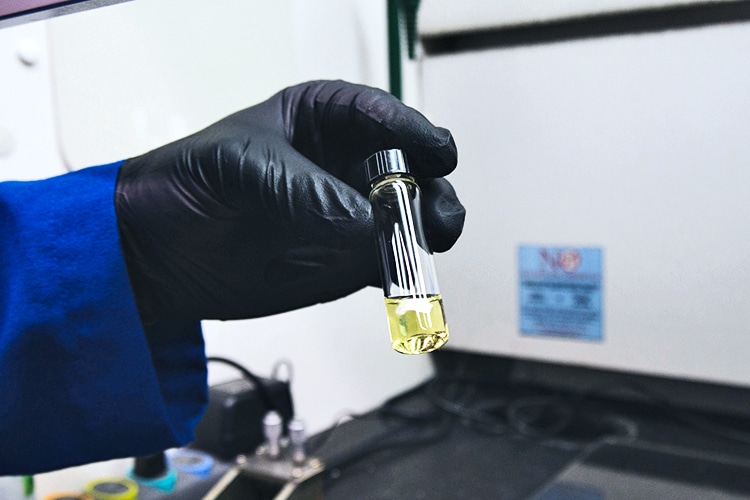Scientists have figured out a way to keep certain proteins active outside the cell, which could lead to materials with functions usually only found in living systems.
The researchers used the technology to create mats that can soak up and trap chemical pollution.
Despite years of effort to stabilize proteins outside of their native environments, scientists have made limited progress in combining proteins with synthetic components like fibers without compromising protein activity.

The new study, which appears in the journal Science, shows a path toward exploiting the power of proteins outside the cell by demonstrating a way to keep proteins active in synthetic environments.
The materials in the study could enable on-demand biochemical reactions, such as in war zones or contaminated sites, where they were once not feasible.
The problem with proteins
“We think we’ve cracked the code for interfacing natural and synthetic systems,” says author Ting Xu, a professor in the materials science and engineering and chemistry departments at the University of California, Berkeley, whose lab led the work.
The problem with proteins is that they’re finicky. Remove them from their native environments and they will likely fall apart. To function properly, proteins must fold into a specific structure, often with the help of other proteins.
To overcome this challenge, Xu’s lab analyzed trends in protein sequences and surfaces to see if they could develop a synthetic polymer that provides all the things that a protein would need to keep its structure and function.
“Proteins have very well-defined statistical pattern, so if you can mimic that pattern, then you can marry the synthetic and natural systems, which allows us to make these materials,” says first author Brian Panganiban, a former graduate student in Xu’s lab who is now a chemist at PolyDrop, a Seattle-based chemical company.
The researchers then created random heteropolymers, which they call RHPs. RHPs are composed of four types of monomer subunits, each with chemical properties designed to interact with chemical patches on the surface of proteins of interest. The monomers are connected to mimic a natural protein to maximize the flexibility of their interactions with protein surfaces.
‘Legos of life’ stack together to build proteins
Researchers at Northwestern University ran extensive molecular simulations to show that the RHP would interact favorably with protein surfaces, leading to correct protein folding and stability outside of the cell.
Making materials from proteins
The researchers then tested whether they can use an RHP to create protein-based materials for bioremediation of toxic chemicals. The researchers mixed RHP with a protein called organophosphorus hydrolase (OPH), which degrades the toxic organophosphates found in insecticides and chemical warfare agents.

The researchers used the RHP/OPH combination to make fiber mats, submersed the mats in a well-known insecticide. The mats degraded an amount of insecticide weighing approximately one-tenth of the total fiber mat in just a few minutes. The scientists say this opens the door to making larger mats that could soak up toxic chemicals in places like war zones.
Could engineered proteins deliver chemo to tumors?
Their approach should be applicable to other enzymes and other materials, Xu says, leading to portable chemistry labs for solving different environmental problems.
The US Department of Defense funded the work. The Department of Energy and the Sherman Fairchild Foundation supported collaborators at Northwestern University. Researchers at the University of Lyon and the Air Force Laboratory received support from the Fulbright program and the Miller institute.
Source: UC Berkeley



